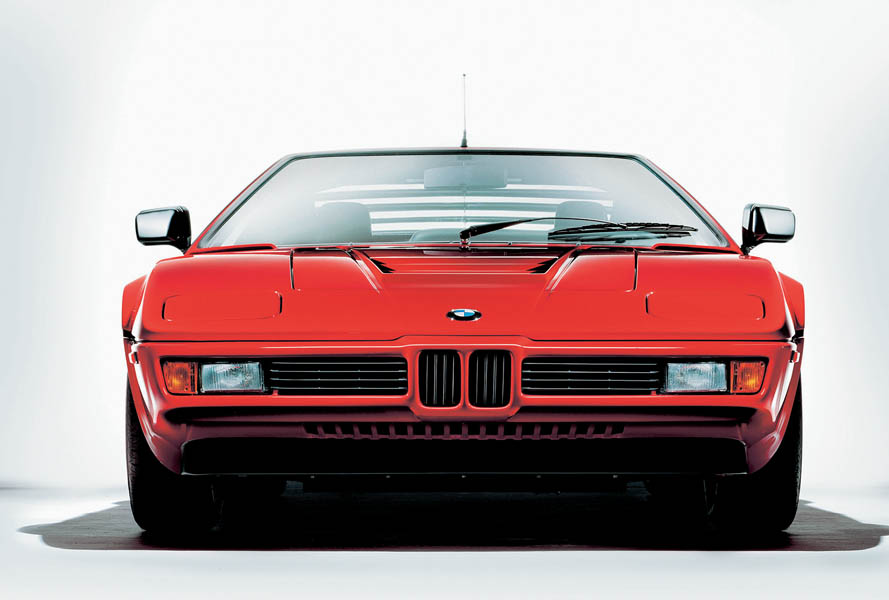
The BMW M1 was geared towards producing Motorsport GmbH’s first competition car not based on a regular production model. While BMW built the technical components, Lamborghini was supposed to supply the body and the chassis. However, financial problems at Lamborghini resulted in significant delays. Ultimately, a new production chain had to be found and the manufacture of the BMW M1 turned into something of a patchwork puzzle. The spaceframe was manufactured at Marchesi, the glass-fibre reinforced plastic bodyshell was produced at T.I.R., both companies were based in Modena. Giorgio Giugiaro’s company ItalDesign assembled them and provided the interiors fittings. The cars were then transported to Stuttgart where Baur installed all the mechanical assemblies.
Jochen Neerpasch, the Managing Director of Motorsport GmbH, joined forces with Bernie Ecclestone and Max Mosley to create the ProCar Series as the opening race leading into most European Formula 1 Grand Prix during the 1979/80 season.

Since the minimum production requirement for homologation in FIA Group 4 was 400 units, the ultra-low mid-engined BMW M1 measuring a mere 1.14 metres in also came as a road-going model. The first car with the famous letter “M” made its debut in the market. The price of the 277 hp BMW M1 back in 1978 was exactly DM 100,000, but demand exceeded supply by far. When 130 cars had been completed after one year, there were still more than 300 firm orders waiting to be fulfilled. Right from the start the BMW M1 was the fastest road-going sports car built in Germany, as timed by a leading car journal: In a test conducted in 1979, the BMW M1 reached a top speed of 264.7 km/h or 164.1 mph. “You only have to shift up from fourth to fifth at 213 km/h or 132 mph, and then keep on accelerating all-out up to the top speed of the car,” according to the testers. Lots of customers appreciated this, as did the subsequent Formula 1 World Champion Alan Jones.
Even this was very little compared with the racing version: Developing 470 hp, the ProCar racing version had a top speed well over 300 km/h or 190 mph. And it was in one of these cars that Niki Lauda, already two-time winner of the Formula 1 World Championship, made his big appearance in 1979, winning three out of 8 BMW M1 ProCar races and finishing second on another occasion. In the USA the Red Lobster Team Ml’s quickly became genuine cult cars wiping out the competition in the IMSA GTO Class.

Motivated by the outstanding success of the BMW M1 and its great image, Motorsport GmbH decided to build another model: Proceeding from the regular 5-Series, the engineers developed and built the M535i in 1980, carrying over the two-valve six-cylinder from the 635CSi. With engine output of 218 hp, this 5-Series quickly became the king of the fast lane.
Specifications:
Engine:
- Type: M88/1, Inline-6
- Displacement: 3.5 liters (3453 cc)
- Power:
- 273 hp (EU) / 277 hp (US) at 6,500 rpm
- Torque: 243 lb-ft (329 Nm) at 5,000 rpm
- Compression Ratio: 9.0:1
- Redline: 7,000 rpm
Performance:
- 0-60 mph (0-97 km/h):
- Approximately 5.6 seconds
- Top Speed:
- Approximately 162 mph (261 km/h)
Dimensions:
- Length: 4,360 mm (171.7 in)
- Width: 1,824 mm (71.8 in)
- Height: 1,140 mm (44.9 in)
- Wheelbase: 2,560 mm (100.8 in)
- Curb Weight:
- Approximately 1,300 kg (2,866 lbs)
Fuel Economy:
- City:
- Approximately 15 mpg (Imperial)
- Approximately 12.5 mpg (US)
- Highway:
- Approximately 25 mpg (Imperial)
- Approximately 20.8 mpg (US)
This article uses material from Chatgpt
















The post BMW M1 appeared first on EN.WHEELZ.ME.




